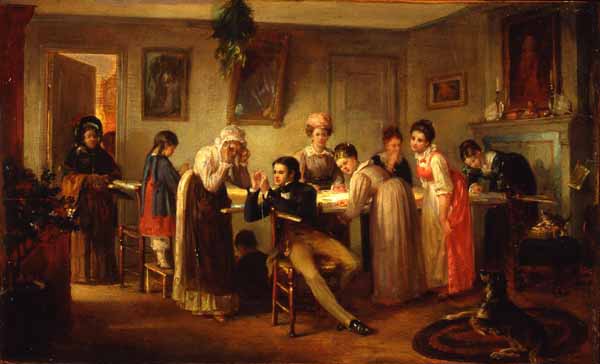
What do we think of when we think of home? Most immediately, home might be the place where we live and spend our days. Home can be past, present, or future: the place we grew up, where we currently reside, or where we see ourselves as part of a longer trajectory. A home is often populated by things that bring comfort and help us feel safe and secure. Home has a story, a scent, a texture, an undeniable taste.
American Stories: Home digs into these themes, considering a range of objects from Shelburne Museum’s permanent collection as they relate to ideas of place, space, comfort, fashion, and narrative. Textiles like Mary Comstock’s bed rug and a remarkable, decorative parlor stove manufactured by the Green Mountain Iron Company reveal ways that people brought comfort and style to their domestic settings. Investigations into buildings like Prentis House—an 18th-century New England saltbox style home moved to the museum campus in 1955—stand as reminders of a certain kind of home popularized during the mid-20th century. Paintings like Edward Lamson Henry’s Old Clock on the Stairs and Albertus Del Orient Browere’s series of paintings of Rip Van Winkle remind us that the home is full of stories, both real and imagined. Together, these objects suggest that Dorothy may have been on to something when she clicked her heels thrice and uttered, “There’s no place like home.”
Generous support for this exhibition is provided by The Donna and Marvin Schwartz Foundation and the Barnstormers at Shelburne Museum.